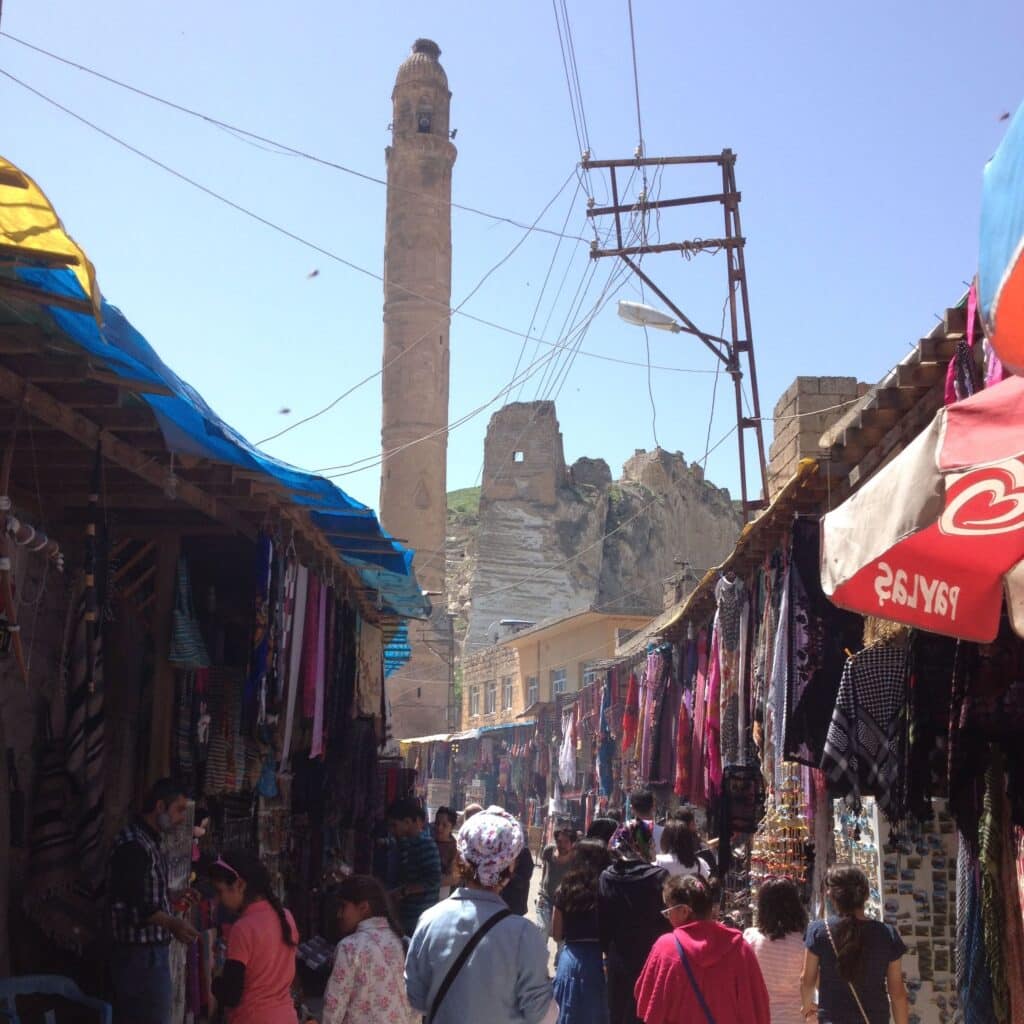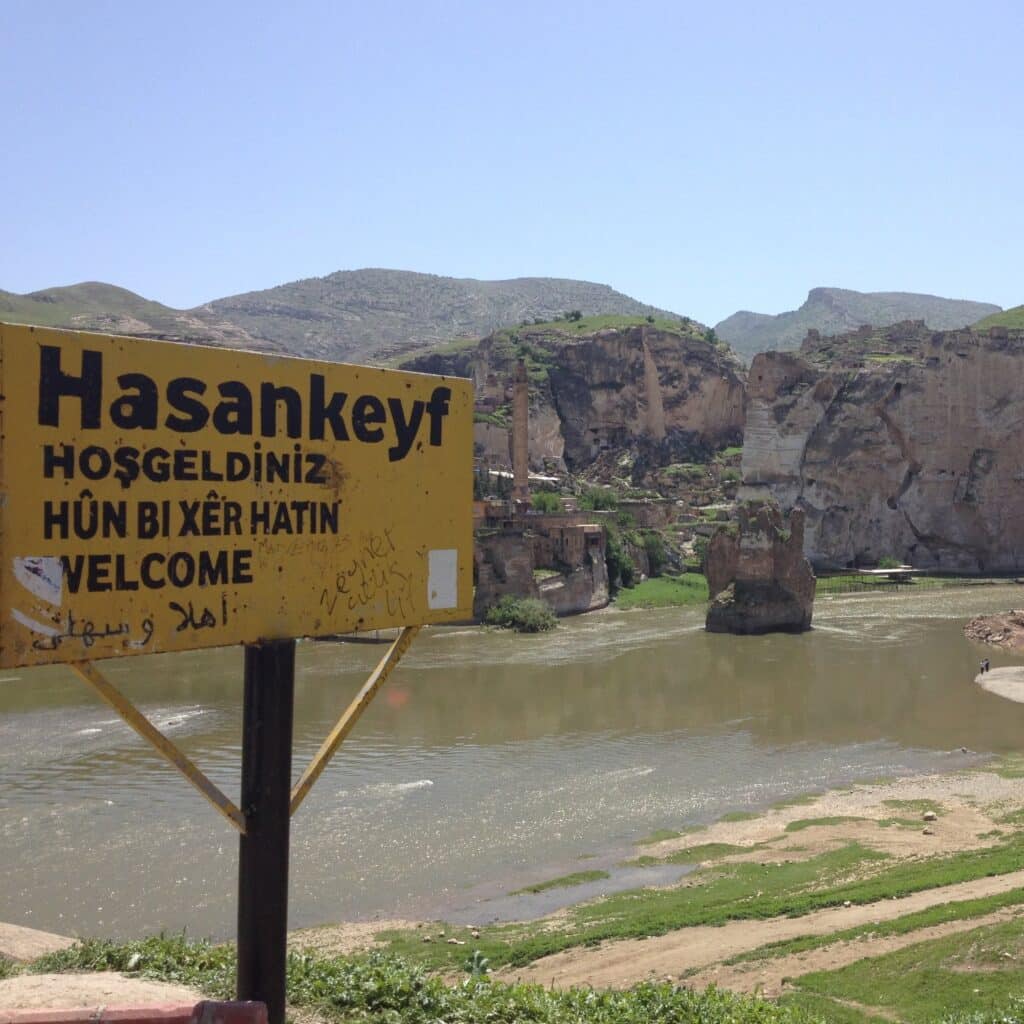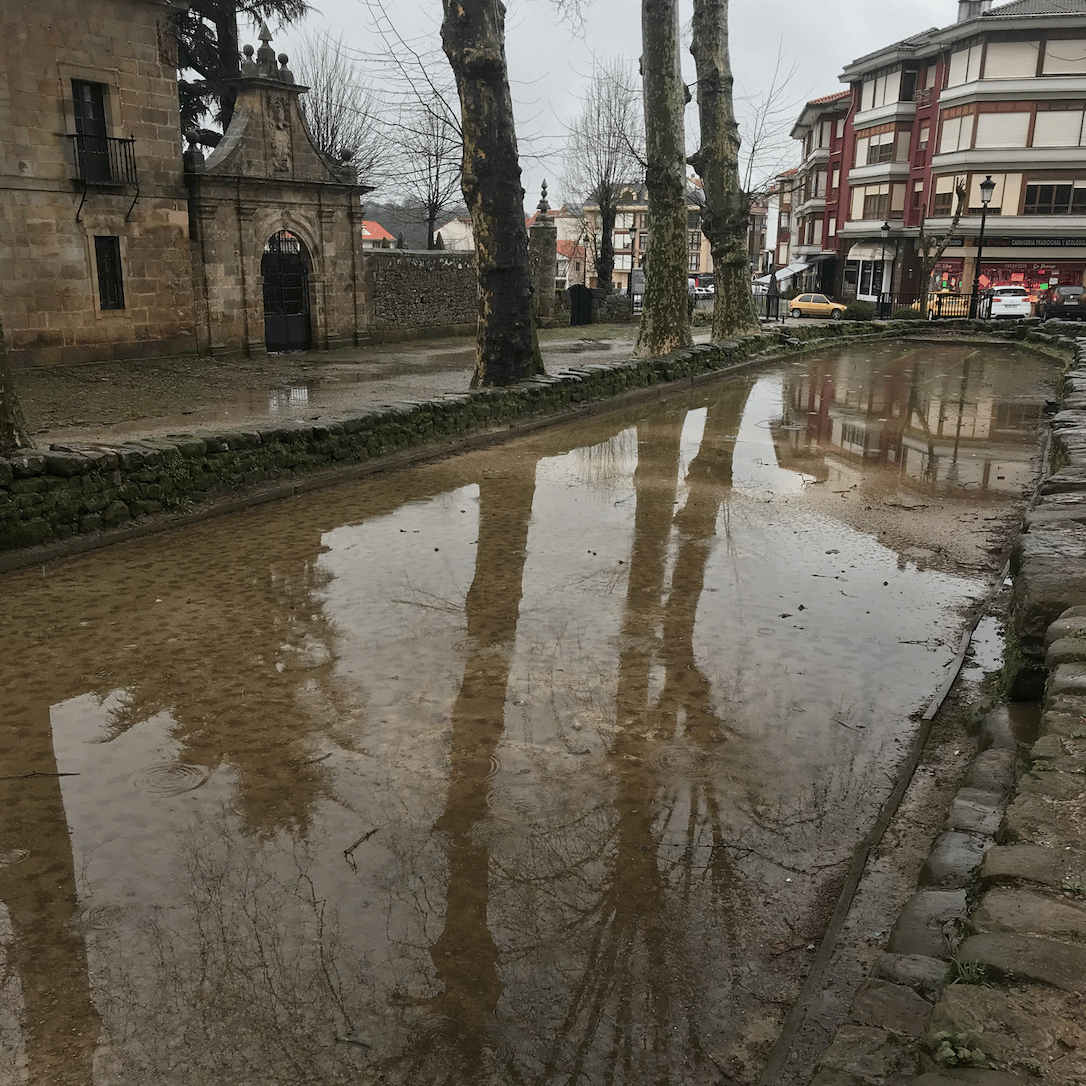🇺🇸 EN
🇹🇷 TR
🇺🇸 EN
Although it is not known exactly when Hasankeyf was founded, it has been determined that the settlement in the region started 12,000 years ago with the excavations. The name of the ancient city is referred to as Kifos and Cepha-Ciphas, which are derived from the Syriac word “Kifo” meaning rock. In Arabic texts, it is referred to as “Hısnı Keyfa”, which means “City of Rocks”. The structures in the region were formed by carving solid rocks. It has hosted many civilizations throughout history, such as the Umayyads, Abbasids, Hamdanis, Mervanis, Artuqids, Ayyubids, and Ottomans, since it was established on the banks of the Tigris river on the shores of Mesopotamia, which is considered the place where humanity spread to the world.
Artuqid Bath, Sultan Süleyman Koç Mosque, Imam Abdullah Zaviye, Er-Rızık Mosque minaret, Zeynel Abidin Tomb, Eyyubi (Girls) Mosque and the castle gate are structures that have survived to the present day. The Byzantines, who built a castle in the city in the 4th century, dominated the region for about 200 years.
The most well-known legend about the city is based on the issue between the master and the journeyman in the construction of the minaret of the Sultan Süleyman Mosque, which was built during the Ayyubid reign. When a disagreement arose between them during the construction of the minaret, the master fired the journeyman. Thereupon, the journeyman starts to build the minaret of the El Rızk Mosque on the rocks at the same place. The first to finish is the journeyman. He asks his master to go up to the minaret. First comes the journeyman, then the master come. The master who goes up is surprised to see his journeyman downstairs. He is impressed by the minaret stairs made with a special technique by his journeyman, whom he did not see coming down, but when he could not be proud of congratulating, he committed suicide by jumping from the minaret. The proverb “The horn passes the ear” is also said to come from this story.
While the area was flooded with the dam created due to the hydro-electric power plant built in 2020, some artifacts were moved to be exhibited in Hasankeyf Museum.
🇹🇷 TR
Hasankeyf
Hasankeyf’in tam olarak ne zaman kurulduğu bilinmese de yapılan kazı çalışmalarında bölgede yerleşimin 12.000 yıl önce başladığını söyler. Yapılar, yekpare kayalar üzerine oyularak yapılmıştır. Antik kentin adı Süryânice’de kaya anlamına gelen “Kifo” kelimesinden türetilen Kifos ve Cepha-Ciphas isimleriyle anılır. Arapça metinlerde ise “Kayalar Kenti” anlamına gelen “Hısnı Keyfa” olarak geçer.
İnsanlığın dünyaya yayıldığı yer kabul edilen Mezopotamya’nın kıyısında Dicle nehri kenarında kurulmuş olması sebebiyle şehir yıllar boyu bir çok medeniyete ev sahipliği yapmıştır. Artuklu Hamamı, Sultan Süleyman Koç Camisi, İmam Abdullah Zaviyesi, Er-Rızık Camisi minaresi, Zeynel Abidin Türbesi, Eyyubi (Kızlar) Camisi ve kale giriş orta kapısı günümüze kadar yapıların parçaları gelmiş yapılardır. 4. yüzyılda buraya bir kale yapan Bizanslılar, yaklaşık 200 yıl boyunca bölgede egemenlik sağlamıştır.
Şehirle ilgili en bilindik efsane Eyyübi hükümdarlığı döneminde yapılmış olan Sultan Süleyman Cami minaresinin yapımında usta ve kalfa arasındaki meseleye dayanır. Minare yapımı sırasında aralarında anlaşmazlık çıkınca, kalfa ustası tarafından kovulur. Bunun üzerine kalfa aynı yerde kayaların üzerine El Rızk Camisi’nin minaresini yapmaya başlar. İlk bitiren kalfa olur. Ustasından minareye çıkmasını ister. Önce kalfa çıkar, ardından usta. Yukarıya çıkan usta, kalfasını aşağıda görünce şaşırır. Çıkarken indiğini görmediği kalfasının özel bir teknikle yaptığı minareden etkilenir fakat tebrik etmeyi gururuna yediremeyince minareden atlayarak intihar eder. “Boynuz kulağı geçer” atasözün de burada ki hikayeden geldiği söylenir.
2020 yılında bölge yapılan baraj sebebiyle kent sular altında kalmış, bazı yapılar sergilenmek üzere bölgeden taşınmıştır.








